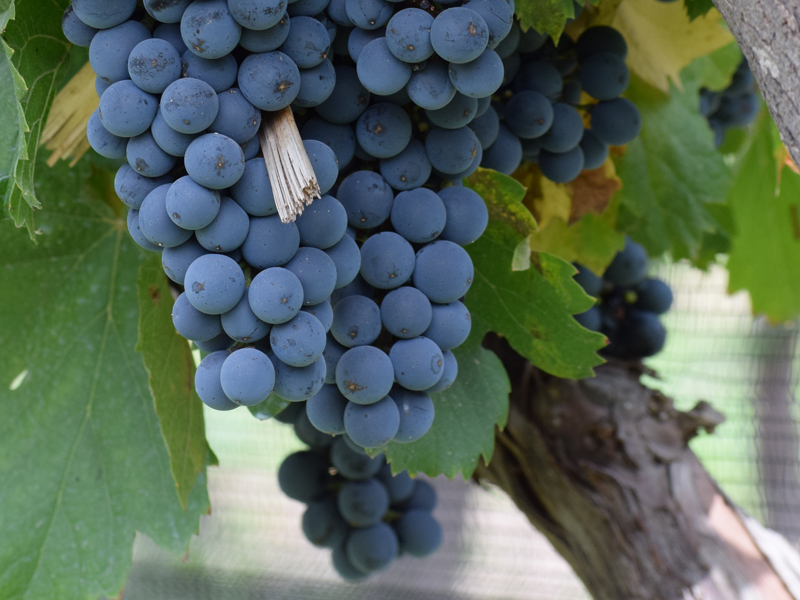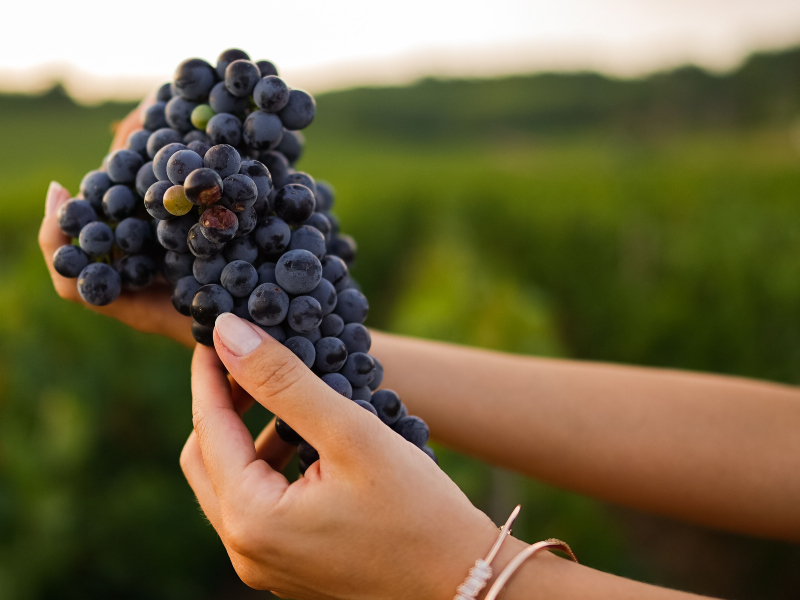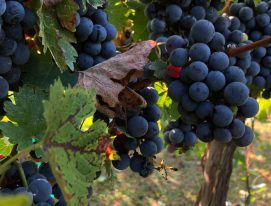Output of organic wines free of agrichemicals, pesticides, fungicides and chemical fertilizers is growing every day in Argentina. Between 2020 and 2022, the number of establishments with organic certification has doubled, demonstrating the country’s commitment to the environment.
Organic viticulture: growing at above average rates
According to the latest survey by the National Institute of Viticulture (INV), in 2022 organic grapes were used at 142 viticultural establishments, with a total of 31,777,695 kilos produced. Mendoza accounted for 60.9% of the total with La Rioja coming in next at 18.6% and San Juan third at 17.9%. Malbec was the most widely produced variety, accounting for 30.1%.
Wine is the second most exported organic vegetable product from Argentina, behind cane sugar, at 11.1 million liters in 2021, representing growth of 6.4%. The main destinations were Denmark, Sweden, the United Kingdom, Germany and the United States. Argentina is the only country in South America to feature among the top ten organic producers in the world, coming in tenth in the ranking published by the OIV.

In 2021, Argentina harvested 9300 hectares of organic certified vineyards, 4.4% of all the vineyards in the country. Although that might not sound like much, the surface area under organic vine increased by 76% compared to 2012 and 27% compared to the previous year. This means that the country has the highest rate of growth (38% annually in the period 2018-2021) of any producer country.
In contrast, according to the OIV, global organic vine output has increased on average by 13% between 2015 and 2019.
In permanent growth
One example of the continuous growth of organic viticulture across the country is Matriz Viva, the sustainability and regenerative agriculture program organized by Grupo Avinea which plans to achieve 700 hectares with organic certification by 2025.
“The challenge was great before but now it’s immense. We started to implement the plan to increase the number of hectares in September 2022 and we’re constantly growing. I can’t say it’s been easy to manage a surface area of that size, but we’ve drawn on the latest research and developments, not just internally but in partnership with other institutions, in order to meet the challenges presented by organic agriculture,” says Cecilia Acosta, Agriculture Manager at the Group, which includes wineries such as Argento in Mendoza and Otronia in Chubut.
The process began with 20 initial hectares of organic viticulture in Altamira and continued with vineyards belonging to the group in Cruz de Piedra, Maipú, and Carrizal, where further growth is anticipated.

Ongoing projects
However, the proliferation of organic viticulture is occurring at every scale in Argentina. This can be seen in the project run by Familia Salas, who fifteen years ago started out with five fully organic hectares and in 2018 added two more. Today, all their Malbec is made without the use of artificial chemicals through sustainable methods.
“It started out as a hobby, but today we’re looking at ways to increase production and add more hectares because our philosophy is to work only with our own grapes so as to reduce risk,” says Ramiro Salas, the Winemaker.
At the other end of the scale is Escorihuela Gascón, “We’ve been working organically and biodynamically for some time at our vineyard in El Cepillo and in 2015 we started to make wine with Escorihuela’s first organic grapes,” says Celina Rivas. “We’ve encountered strong demand from the public for these wines, so we started to work on the winery vineyard in Agrelo to begin the conversion process. We’re convinced that the way to make great wines is to show the utmost respect for the environment.”

The advantage of producing in Argentina
The production of organic wines in Argentina has a natural advantage compared to other regions across the world. So believes the French oenologist Thibault Lepoutre, the Wine Director for Latin America at Bodega Piedra Negra.
“Compared to other countries, in Mendoza and the other regions close to the Andes especially, the advantage is the climate. We get very little rainfall because the damp air currents from the Pacific are blocked by the mountains. With little rainfall, there’s less need for products to combat the cryptogamic diseases that attack the plant. We also get intense sunlight which reduces diseases to nothing. The lack of rainfall means low humidity and so very little botrytis. That’s a massive advantage when it comes to the health of the plant.”
With regard to quality, the arid climate in the west and the cool, windy regions of the south ensures that there is very little difference between organic grapes and conventionally grown ones. “At Ruca Malen we are very committed to caring for the environment and sustainability so adding organic wines to our portfolio came about naturally. We started with grapes from a producer with whom we’ve been working for years who is already certified. Meanwhile, we certified the winery in 2020 and are in the process of getting certification for our vineyard in Agrelo, Luján de Cuyo, within the next few years,” says Agustina Hanna at Ruca Malen.
“In Mendoza we have the natural advantage of obtaining healthy grapes without any need to apply products in the vineyard and then in the winery we can work along minimal intervention lines without much trouble. All our wines are made with respect for the environment and the nature of the terroir.”



